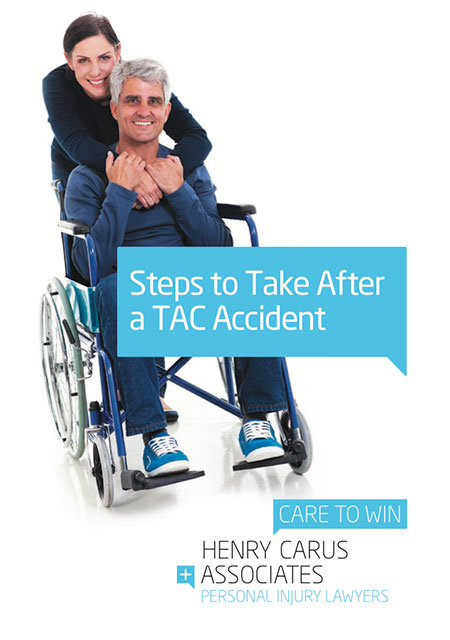
Work-related injuries come in many forms and can have a devastating effect on your health as well as your career. However, if you work in Victoria and were injured on the job, you may be entitled to a variety of benefits under the WorkCover program.
An important step in filing a WorkCover claim is submitting the “certificate of capacity” to your employer and their insurer, along with any bills or receipts for treatment that you have received. The certificate of capacity plays a major role in the WorkCover benefit claims process and helps ensure that you receive the benefits that you are entitled to. Therefore, it is very important to fill out the certificate correctly and to the best of your ability.
What Is the Certificate of Capacity?
The certificate of capacity is a form that is submitted by an injured worker who is seeking benefits under the WorkCover program. The main purpose of the form is to help your employer’s insurer understand the nature of your injury in order to determine your capacity for work as well as the type and amount of payments that you are entitled to receive.
It is important to note that the first medical certificate for a work-related injury WorkCover claim must be issued by a medical practitioner. In other words, your medical practitioner will complete most of your certificate. On the certificate, the medical practitioner will provide a diagnosis, assess the patient’s capacity, advise the patient about the health benefits of returning to work, provide a timeline for recovery and return to work, and certify capacity based on what the patient can do.
To view a blank certificate of capacity, visit WorkSafe Victoria.
How It Works for Both WorkCover and the TAC
While the WorkCover program provides benefits for workers who are injured on the job, the TAC (the Transport Accident Commission) provides benefits, such as medical treatment, rehabilitation services, and income assistance to people who are injured in transport accidents in Victoria. According to the Transport Accident Commission’s website, a claim can be lodged with the TAC if:
- A person is involved in a car, motorcycle, bus, train, or tram accident; and
- That person is injured or dies as a result of the accident.
Claims lodged with either the WorkCover program or the TAC are required to be accompanied by a certificate of capacity. In fact, both programs have redesigned their certificate of capacity and medical forms in order to consolidate them into one form. The hope is that the claims process for both programs will be clearer now that they are using the same certificate of capacity form.
The Importance of Filling It out Correctly
The certificate of capacity is a very important part of lodging a claim under both the WorkCover and the TAC programs, as the information provided on the form helps determine which benefits you are entitled to. If the form is filled out incorrectly you will most likely not receive the appropriate benefits, your claim may be delayed for revisions, and/or your claim may even be denied.
In order to protect your benefits, make sure that your certificate of capacity is filled out correctly and consult with a competent lawyer if you have questions.
Tips You Should Follow When Completing the Certificate
WorkSafe Victoria’s website provides a list of tips that will help you successfully complete the certificate and navigate the WorkCover claims process. These helpful tips include:
- Don’t forget to sign the Worker’s Declaration portion of the certificate.
- Be sure to make a copy of your completed certificate of capacity for your records before submitting it to your employer or WorkSafe Agent.
- Help your doctor out by talking with your employer about activities that you can safely perform at work while you recover.
Common Mistakes Workers Make When Completing the Form
Our Melbourne law firm has noticed that there are several common mistakes that are repeatedly made when filling out certificates of capacity. Be wary of these easily made mistakes as they may cause you to miss out on the benefits that you are entitled to.
Common mistakes when completing the certificate of capacity include:
1. Not Being Clear: Make sure to be as specific as possible when describing your injuries. It is always advisable to use clear language so that the certificate of capacity accurately reflects your injuries.
2. Inaccurately Stating the Date of the Injury: If a worker is involved in a work-related accident, it is generally very obvious that they were injured on a particular day. However, for injuries that have built up over time it may be impossible to pinpoint an exact date of injury. If your injury built up over time be sure to cross out the “date of the injury” field and indicate how long your injury has been building up.
3. Leaving Fields Blank: Be sure to always fill out your certificate of capacity fully without leaving any fields or areas blank.
4. Omitting Details: It is very important to be as detailed as possible when completing your certificate of capacity and to clearly emphasise important items.
5. Using Handwriting that is Difficult to Read:Don’t risk a miscommunication due to poor penmanship. Be sure that your certificate is legible and easy to read.
6. Choosing to Lodge a Claim without a Lawyer’s Assistance: Lawyers know the law and know your options when it comes to complicated matters such as lodging a WorkCover claim. Seeking legal advice will help ensure that your certificate of capacity is filled out correctly so that you are able to receive the maximum benefits possible.
Our Lawyers Can Advise You Today
With more than 40 years’ experience in WorkCover law, the team at Henry Carus + Associates is well equipped to advise you of your legal rights and how to best proceed with your claim. If you live in Melbourne or elsewhere in Victoria and would like more information, feel free to call or contact us online.
 Call Us Today
Call Us Today



